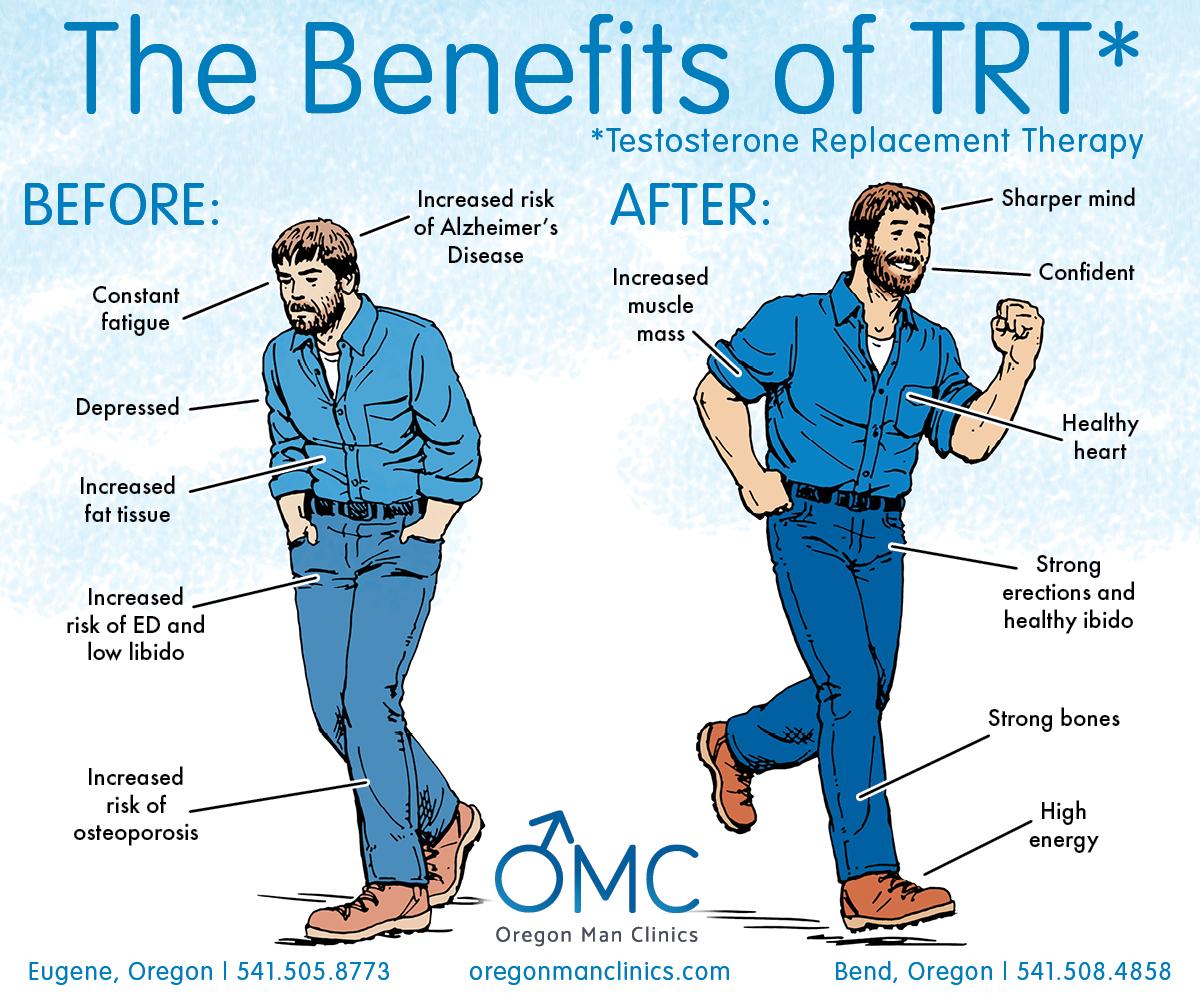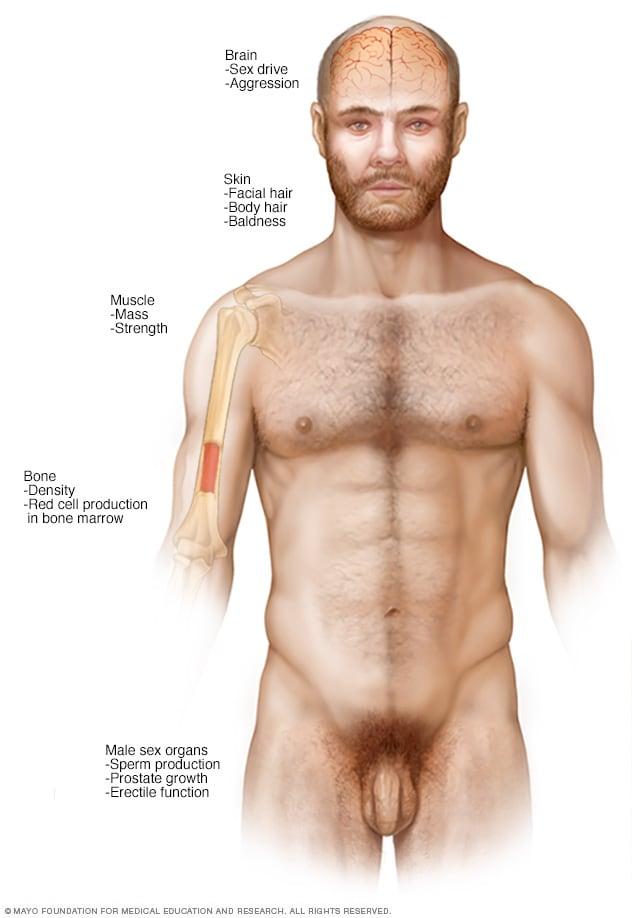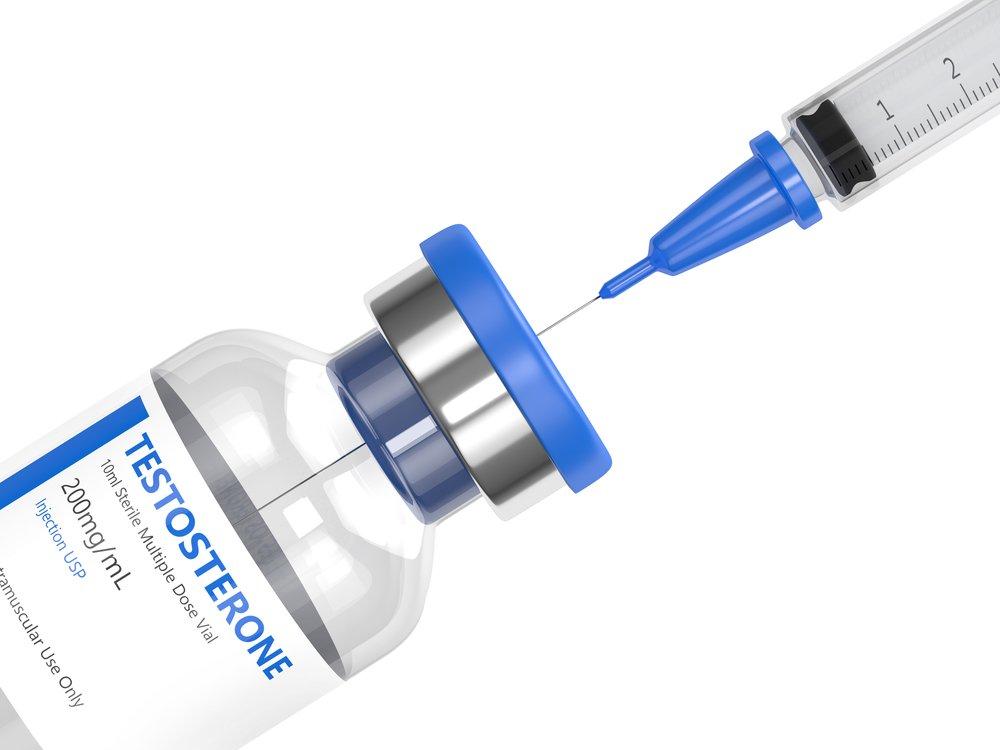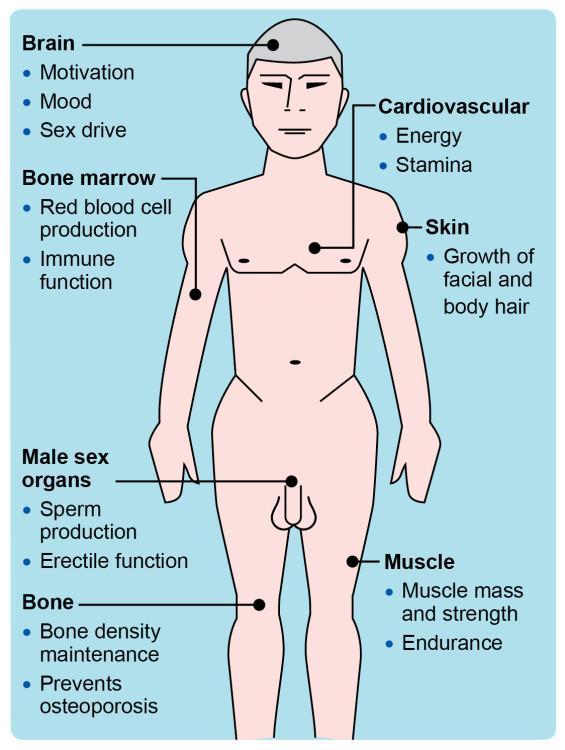Understanding Testosterone Therapy Prescription: A Comprehensive Guide
In a world where wellness trends ebb and flow with the seasons, one topic has ignited renewed interest and debate: testosterone therapy. While it might conjure images of muscle-bound athletes or the allure of youthful vitality, the reality of testosterone therapy is far more nuanced. Designed to address hormonal imbalances that can affect men and women alike, this therapy offers potential benefits alongside critical considerations. As the conversation surrounding testosterone evolves, it is essential to understand the intricacies of its prescription, the science behind it, and the individuals it seeks to help. Join us as we explore the essential aspects of testosterone therapy, shedding light on its mechanisms, applications, and the thoughtful dialogue surrounding its use in contemporary medicine. Whether you’re seeking knowledge for personal reasons or aiming to understand the broader implications of this evolving field, this article serves as your informative guide to the world of testosterone therapy prescription.
Understanding Testosterone Therapy and Its Importance
Testosterone therapy has emerged as a vital treatment option for individuals experiencing low testosterone levels, often referred to as low T. This condition can lead to a myriad of symptoms that significantly impact daily life, including fatigue, decreased libido, mood changes, and even muscle loss. By administering testosterone therapy, patients may regain their vitality and improve overall well-being. It is essential to recognize that testosterone therapy is not just a one-size-fits-all approach; rather, it requires careful evaluation by healthcare professionals to tailor treatments to individual needs and health conditions.
In evaluating the importance of testosterone therapy, several factors must be taken into account:
- Enhanced Energy Levels: Many patients report a significant boost in energy and stamina.
- Improved Mood: Testosterone therapy can alleviate feelings of depression and irritability.
- Better Sexual Function: Increased libido and improved erectile function are commonly noted benefits.
- Muscle Mass Preservation: Therapy helps in maintaining muscle strength and mass, countering age-related muscle loss.
| Benefits of Testosterone Therapy | Potential Risks |
|---|---|
| Increased energy levels | Sleep apnea |
| Improved mood | Acne and skin reactions |
| Enhanced libido | Prostate health concerns |
| Muscle mass retention | Cardiovascular risks |

Identifying Candidates for Testosterone Prescription
When considering patients for testosterone therapy, it is essential to conduct a thorough evaluation to ensure their suitability for prescription. Key factors to assess include symptoms of testosterone deficiency, which can manifest in various ways. The following symptoms are commonly associated with low testosterone levels:
- Decreased libido
- Fatigue or decreased energy
- Muscle weakness
- Mood swings or depression
- Difficulty concentrating
Additionally, it is crucial to review the patient’s medical history and perform laboratory tests to confirm low testosterone levels. Ideal candidates typically present with a combination of clinical symptoms and laboratory results that fall below the normal testosterone range. Understanding the risk factors that may contribute to testosterone deficiency is also vital. Some of these factors include:
| Risk Factor | Description |
|---|---|
| Age | Men over 40 are at greater risk of low testosterone. |
| Obesity | Excess body fat can influence hormone levels. |
| Chronic Illnesses | Conditions like diabetes and liver disease can lower testosterone. |
| Medications | Certain drugs may negatively impact testosterone production. |

Navigating the Types of Testosterone Treatments Available

Assessing the Benefits and Risks of Hormone Therapy
The decision to pursue hormone therapy, particularly testosterone therapy, involves a careful evaluation of both potential benefits and associated risks. On one hand, many individuals may experience improved energy levels, enhanced mood, and increased muscle mass, which can significantly enhance their quality of life. Other potential advantages include:
- Improved Libido: A resurgence in sexual desire can often be reported.
- Increased Bone Density: This therapy may help mitigate osteoporosis risk.
- Enhanced Cognitive Function: Some evidence suggests sharper mental acuity.
Conversely, hormone therapy carries certain risks that must be judiciously weighed. Possible side effects include cardiovascular issues, mood swings, and an increase in the risk of prostate abnormalities. Individuals must be thoroughly informed about these risks to make educated decisions. Critical considerations include:
| Potential Risks | Considerations |
|---|---|
| Cardiovascular Concerns | Monitoring heart health is vital. |
| Hormonal Imbalances | Regular assessments are necessary. |
| Prostate Health | Screening for prostate cancer should be a priority. |
Monitoring and Managing Side Effects of Testosterone
Monitoring and managing the side effects of testosterone therapy is crucial for achieving optimal results while minimizing potential risks. Regular follow-ups with your healthcare provider should include blood tests to assess testosterone levels, hematocrit, and other relevant markers. Patients should also be vigilant in observing any changes in their health or well-being. Common side effects may include:
- Acne or oily skin
- Increased aggression
- Changes in libido
- Weight gain or loss
- Sleep apnea
In addition to routine monitoring, maintaining an open line of communication with your healthcare professional can lead to timely interventions when necessary. If side effects become pronounced or uncomfortable, modifications to the treatment regimen, such as dosage adjustments, may be warranted. To better visualize the potential side effects and management strategies, the following table summarizes key points:
| Side Effect | Monitoring Approach | Potential Management Strategy |
|---|---|---|
| Acne | Regular skin assessments | Topical treatments or dosage adjustment |
| Aggression | Behavioral evaluations | Therapy or dosage review |
| Libido Changes | Patient self-reporting | Possible dose revision |
| Weight Fluctuations | Routine weight checks | Dietary and exercise counseling |
| Sleep Apnea | Sleep studies if indicated | Consider alternative treatments |
Incorporating Lifestyle Changes Alongside Therapy
While focusing on testosterone therapy, it’s essential to integrate lifestyle changes that can enhance the effectiveness of your treatment. Nutrition plays a pivotal role in this process. Incorporating a balanced diet rich in vitamins, minerals, and healthy fats can support hormonal balance and overall well-being. Consider focusing on:
- Lean proteins: such as chicken, fish, and legumes.
- Healthy fats: like avocados, nuts, and olive oil.
- Fruits and vegetables: particularly those high in antioxidants like berries and leafy greens.
In addition to dietary adjustments, regular exercise should be a cornerstone of your lifestyle strategy. Engaging in a mix of cardio and strength training not only aids in improving physical health but also optimizes testosterone levels. Here’s a simple breakdown of beneficial activities:
| Activity Type | Frequency |
|---|---|
| Strength Training | 2-3 times per week |
| Cardiovascular Exercise | 150 minutes/week |
| Flexibility and Mobility | Daily |
Implementing these changes can augment the benefits of your therapy, promoting a path toward improved health and vitality.
Guidelines for a Collaborative Approach Between Patient and Provider
Establishing a strong rapport between the patient and the provider is essential for effective testosterone therapy. Both parties should engage in open communication, fostering a trusting environment where the patient feels comfortable discussing their symptoms and expectations. To facilitate this, it’s beneficial to set aside dedicated time for consultations to ensure all concerns are addressed. The patient should come prepared with a list of symptoms, personal health history, and questions, while the provider should be ready to share relevant medical information and treatment options tailored to the patient’s unique needs.
Moreover, feedback and follow-up play pivotal roles in the collaborative process. Regular monitoring of hormone levels and overall health can help in adjusting dosages and protocols as needed. Establishing a feedback loop can involve:
- Regular check-ups: Schedule follow-up appointments to monitor progress and adjust treatment as necessary.
- Symptom tracking: Utilize journals or digital apps to record changes or improvements in health, which can be shared during visits.
- Shared decision-making: Encourage a collaborative dialogue where both patient and provider assess treatment efficacy and explore alternative options if required.
| Aspect | Collaboration Tips |
|---|---|
| Communication | Discuss openly and ask questions. |
| Monitoring | Schedule regular follow-ups to assess progress. |
| Feedback | Share experiences and adjust treatment together. |
Q&A
Q&A on Testosterone Therapy Prescription
Q1: What exactly is testosterone therapy?
A1: Testosterone therapy involves the administration of testosterone, a crucial hormone primarily produced in the testicles in men and in smaller amounts in women’s ovaries and adrenal glands. This therapy is designed to restore hormone levels in individuals diagnosed with testosterone deficiency, helping to alleviate symptoms such as fatigue, decreased libido, and mood changes.
Q2: Who might need testosterone therapy?
A2: Testosterone therapy is often prescribed for men experiencing a medical condition known as hypogonadism, where the body does not produce enough testosterone. This may occur due to age, injury, or underlying health issues. Women may also receive testosterone therapy, although it’s less common, typically to address specific hormone-related conditions after thorough evaluation.
Q3: What are the potential benefits of testosterone therapy?
A3: Individuals undergoing testosterone therapy may notice a range of benefits, including increased energy levels, improved mood, enhanced libido, and better muscle strength. It may also improve bone density and contribute to better cognitive function, although results can vary based on individual circumstances.
Q4: Are there risks associated with testosterone therapy?
A4: Yes, while testosterone therapy can offer benefits, it is not without risks. Possible side effects include acne, sleep apnea, increased red blood cell count, and potential cardiovascular issues. It is essential for patients to discuss these risks with their healthcare provider to make an informed decision.
Q5: How is testosterone therapy administered?
A5: Testosterone can be administered in several forms, including injections, topical gels, pellets implanted under the skin, or patches. The choice of method often depends on patient preference, medical history, and the specific conditions being treated.
Q6: How is the effectiveness of testosterone therapy monitored?
A6: After starting testosterone therapy, healthcare providers typically monitor hormone levels through blood tests and assess symptoms over time. Regular follow-ups are crucial to ensure the therapy is effective and to make any necessary adjustments while monitoring for side effects.
Q7: Who prescribes testosterone therapy, and how can one get it?
A7: Testosterone therapy can be prescribed by a range of healthcare professionals, including primary care physicians, endocrinologists, and urologists. Patients often start by discussing their symptoms with their doctor, who may conduct tests to evaluate hormone levels before determining the suitability for therapy.
Q8: Is testosterone therapy suitable for everyone with low testosterone levels?
A8: Not necessarily. Testosterone therapy is not suitable for everyone. Individuals with certain health conditions, such as prostate or breast cancer, heart disease, or severe sleep apnea, may not be good candidates. A comprehensive evaluation is necessary to determine the appropriateness of therapy for each individual.
Q9: What is the long-term outlook for those on testosterone therapy?
A9: The long-term outlook for individuals on testosterone therapy can be positive, provided it’s managed carefully under medical supervision. Regular check-ups and open communication with a healthcare provider can help mitigate risks and ensure that the therapy remains beneficial and safe over time.
Q10: Are there lifestyle changes that can complement testosterone therapy?
A10: Absolutely! In addition to testosterone therapy, adopting a healthy lifestyle—such as regular exercise, a balanced diet, adequate sleep, and stress management—can significantly enhance overall well-being and the effectiveness of the treatment. It is important for individuals to work closely with their healthcare provider to develop a holistic plan for their health.
By addressing these key questions, we hope to clarify the essentials surrounding testosterone therapy and empower individuals to make informed decisions about their health.
Concluding Remarks
In the intricate dance of hormone balance, testosterone therapy emerges as a pivotal player for those navigating the complexities of low testosterone levels. As we draw the curtain on our exploration of testosterone therapy prescriptions, it’s clear that this treatment is not merely a quick fix but a nuanced approach that warrants careful consideration, individualized care, and ongoing dialogue with healthcare professionals.
Whether you find yourself grappling with fatigue, diminished vitality, or the subtleties of mood fluctuations, understanding the options available to you is essential. Comprehensive evaluations and personalized treatment plans can illuminate the path to achieving optimal health and well-being.
As with any medical intervention, knowledge is not only power but also a guiding light in making informed decisions. Navigating the realm of testosterone therapy can be complex, yet it offers a glimmer of hope for many. Remember, the journey is as important as the destination—take the time to reflect, consult, and ultimately determine what is best for your unique situation. In a world where health can sometimes feel elusive, may you discover the resources and support needed to reclaim your vitality and pursue your best self.









